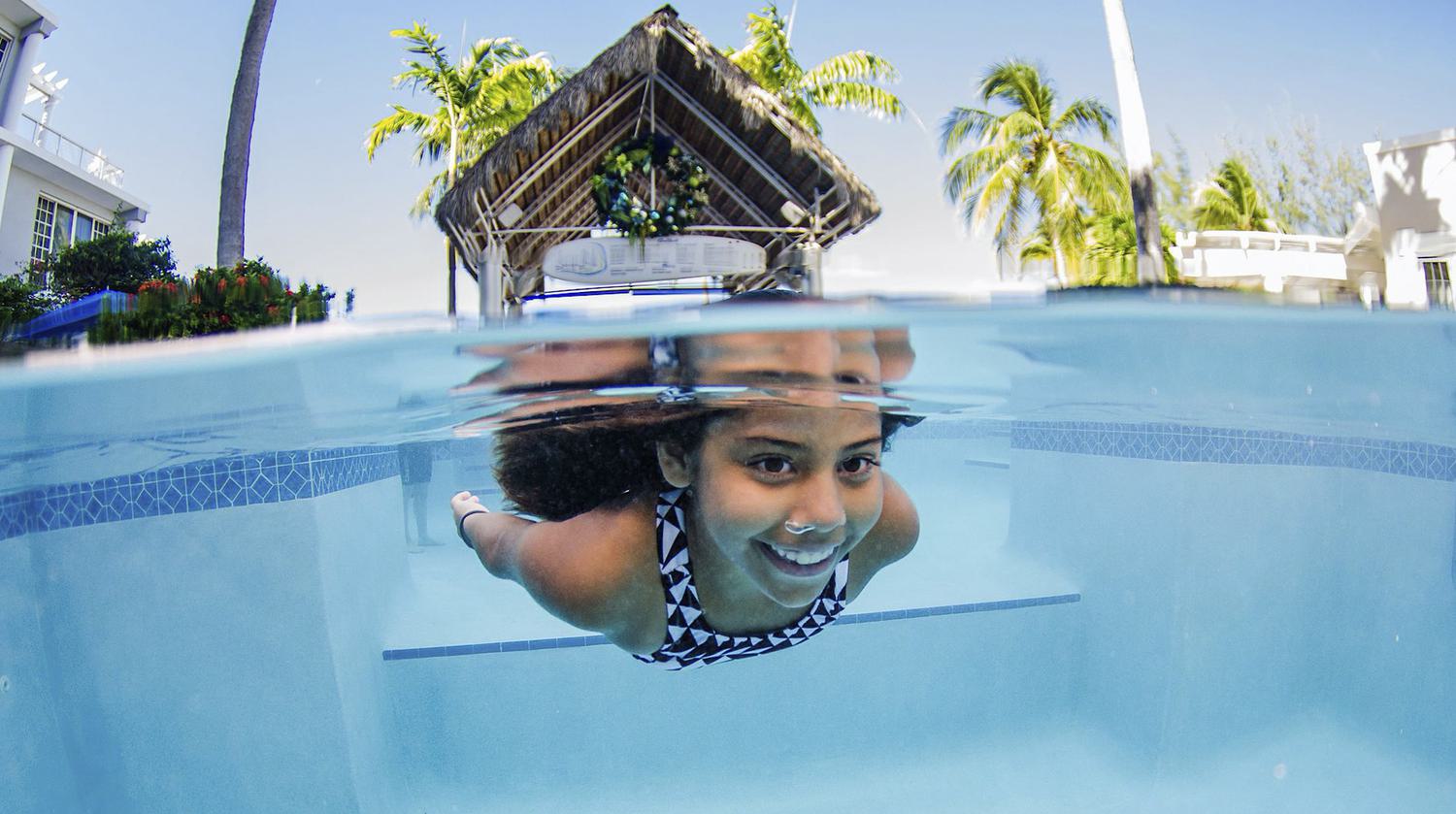According to the Centers for Disease Control and Prevention (CDC), drowning is the leading cause of unintentional death in children under age five in the US. With life in, on and around the water being such an integral part of daily life in the Cayman Islands, Thrive Fit's Danielle Henry shares her top tips for keeping children safe around water, including the common signs of drowning and where to find the best swim schools.
Every year in the US, nearly 900 children aged 0 to19 die from unintentional drowning (www.childrenssafetynetwork.org). Thankfully, in Cayman, water-related deaths among children are relatively low. However, with so many of them participating in water-related activities, it is important to be prepared in order to stay safe in the Islands' waters. Here are some top tips for keeping you and your family safe in or around the water.
On This Page
1. Set Strict Limits
Teach children that they are not allowed to enter a pool or the sea without an adults permission. Always review the area's Pool Rules with your child beforehand. For older children, state exactly how deep they are allowed into the sea or sometimes even a pool, if it's especially deep. It is recommended that children use flotation devices in the ocean, as even strong swimmers can get into trouble.
2. Supervise Children
Children should always be supervised when in or near the water. Adults supervising children should remain alert and vigilant. Whenever toddlers are in or around water, an adult should be within arms reach. Remember that small children can drown in as little as one inch of water.

3. Learn What Drowning Looks Like
It's important to be aware of what drowning looks like as it is not the violent, splashing call for help that you might expect. When someone is struggling to breathe, speech and screaming become secondary. The natural reaction is to extend arms laterally and press down on the waters surface, as opposed to waving.
4. Learn CPR
It’s important for parents to learn first aid, CPR and basic water rescue so that they can act in an emergency. Private and group courses are offered by both Thrive Fit (Tel: (345) 938 1113 or Email: info@thrivefitcayman.com) and Fitness Connection (Tel: (345) 949 8485 or Email: fitness@fitness.ky). Both companies offer Nanny Water Safety Courses and swimming lessons to teach nannies about pool safety in and around the water. Sky Blue Aquatics offers subsidised swimming lessons to nannies and caregivers. Tel: (345) 916 0054. Email: info@skyblueaquatics.com. The Red Cross also offers CPR/First Aid courses.
Some Common Signs of Drowning
- Head low in the water with mouth at water level.
- Head tilted back with mouth open.
- Eyes glassy and empty, unable to focus.
- Eyes entirely closed.
- Hair flopped over forehead or eyes.
- Not using legs, but vertical in the water.
- Hyperventilating or gasping.
- Trying to swim in a particular direction but not making headway.
- Trying to roll over onto back without success.
- Appearing to be climbing an invisible ladder.

Life-Saving Lessons
Enrol kids in swimming lessons early to ensure that they are equipped with the skills to swim safely. Babies can start lessons as young as six weeks old with a paediatrician's approval. While infants cannot swim on their own as they have not yet developed the strength and motor skills needed, starting little ones with swimming tuition at a young age will get them comfortable with structured lessons, their teacher and most importantly, the water. All swim lessons should include safety survival techniques such as:
- Fall in, turn around, reach for the wall
- Fall in, roll over, float
- Getting in and out of a pool safely
- Holding and walking (with hands) on the side of the pool





